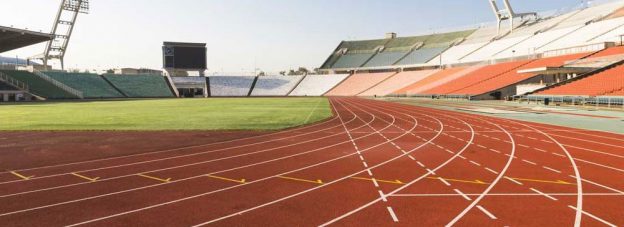When choosing a builder for your running tracking construction project you’ll want to ensure that they meet all your criteria – including your budget. This will ensure successful outcomes for both the running track construction project and winning outcomes for the athletes using the new track. Here are some key factors to keep in mind when planning and hiring a construction company to build your running track.
Choosing the right builder with the right qualifications is pivotal for your project. Building a running track is not any old task that a landscaper, general contractor or roofer can do. It’s a highly specialized skill set that requires years of training and experience in running track construction. Often, unqualified builders bring techniques from non-athletic construction into athletic construction, which can have undesired results. This will also lead to costly mistakes throughout your project since they have very little knowledge about the process and how to best execute the build.
Cost is a crucial factor in deciding what builder to go with. The lowest cost estimate for a project may appear to be the most affordable option but ultimately becomes the most expensive option if not constructed properly. That’s why you should look for a builder that specializes in running track construction that offers an affordable cost estimate paired with high-quality service.
Track surfaces can vary greatly. Track durability, thickness, and surface-life likeness are key factors to consider when choosing the right surface for you. The location and frequency of use are also essential factors to keep in mind to determine what material you’ll need for your running track. Deciding on the materials and type of track surface to install can be complicated so it’s important to know your options. These are the three, most used track surfaces available.
- Modern Full Por Systems – This is a multi-layer blend of poured polyurethane and rubber particles that’s a durable and all-weather surface that’s typically used at collegiate facilities and commercial athletic venues. It has a life expectancy is often 10 to 11 years with regular maintenance.
- Paved-in-Place Track Systems – This is a multi-layer impermeable surface that’s great for high-traffic areas. It’s also Eco-friendly since polyurethane does not contain petroleum materials. It has a Life expectancy is often 8 to 10 years with regular maintenance.
- Sandwich Track Systems – This is a graded and impermeable running surface that’s ideal for high-traffic areas and is used as outdoor running tracks for high schools. It has a life expectancy is often 9 to 11 years with regular maintenance.
Maintenance, repairing, and resurfacing is normal during the life of a track. Even the most resilient surfaces wear down. You’ll want these services to be conducted by a leading track construction and installation company such as Mid-America Sports Construction. We are experts in indoor and outdoor construction and have the knowledge and resume to build championship-caliber tracks. Contact us to choose the best running track suitable for your facility and your athletes’ needs.





